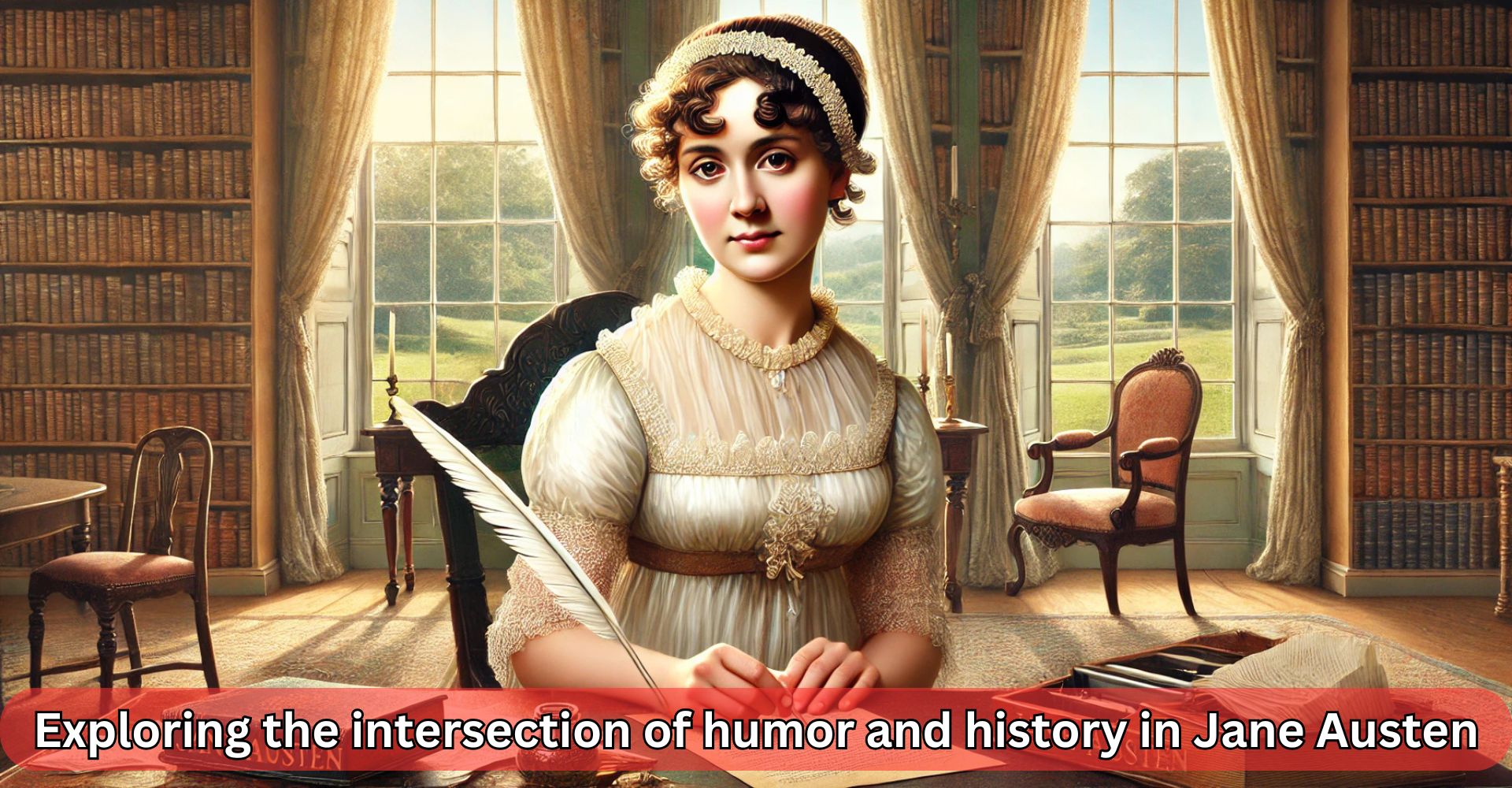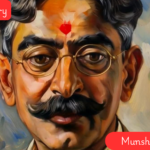Exploring the intersection of humor and history in Jane Austen
Jane Austen may be known for her sharp social commentary and timeless romances, but her wit is a treasure trove that never fails to delight. Imagine uncovering moments where history’s most rigid norms clash hilariously with Austen’s knack for humor—moments that make you laugh out loud while marveling at her brilliance. Exploring the intersection of humor and history in Jane Austen reveals more than just clever quips; it showcases her genius in turning the mundane into the unforgettable.
From Mr. Collins’ painfully awkward proposals to Lady Catherine de Bourgh’s outrageous arrogance, Austen’s characters are masters of unintentional comedy. These moments not only highlight her wit but also paint vivid pictures of the social structures and historical context of her time. Get ready to dive into 10 laugh-out-loud instances that prove why Jane Austen remains one of literature’s most entertaining storytellers. Let’s begin this joyful exploration!
10 Hilarious Moments That Show Jane Austen’s Genius in Exploring the Intersection of Humor and History
Jane Austen’s novels are beloved for their sharp social critique, endearing characters, and timeless romantic tales. Yet, one aspect that truly sets her apart is her ability to blend humor with historical context, creating a delightful intersection of wit and realism. Exploring the intersection of humor and history in Jane Austen opens a window into her brilliant storytelling, where societal norms, human folly, and keen observations collide in the most amusing ways. Let’s dive into 10 hilarious moments that perfectly showcase Austen’s genius.
Also Read :
- Compare Hamlet with Macbeth, Othello and other Tragedies
- “The Pardoner’s Tale” is the finest tale of Chaucer
- Prologue to Canterbury Tales – (Short Ques & Ans)
- Confessional Poetry – Definition & meaning
- Line By Line Explanation Of The Poem The Eve of St. Agnes
- 10 Proven Steps on How to Become a Self-Made Millionaire
1. Mr. Collins’ Painfully Awkward Proposal to Elizabeth Bennet
In Pride and Prejudice, Mr. Collins’ proposal to Elizabeth Bennet is comedy gold. His inflated sense of self-worth, paired with his absurd justifications for marriage, makes the entire scene unforgettable. When Elizabeth rejects him, his immediate assumption that she is simply playing hard to get is both laughable and a sharp jab at the societal expectations of women during Austen’s time. The humor lies in his obliviousness and the historical backdrop of marriage as a transactional arrangement.
2. Mrs. Bennet’s Over-the-Top Matchmaking Obsession
Mrs. Bennet’s relentless pursuit of wealthy husbands for her daughters is a recurring source of humor in Pride and Prejudice. Her exaggerated reactions and shameless scheming provide countless laugh-out-loud moments. Whether she’s fretting over Jane’s damp petticoats or shamelessly hinting at Mr. Bingley’s wealth, Mrs. Bennet’s antics highlight the pressure placed on women to secure financial stability through marriage—a serious issue Austen tackles with her trademark wit.
3. Catherine Morland’s Overactive Imagination in Northanger Abbey
Catherine Morland, the heroine of Northanger Abbey, is a fervent reader of Gothic novels, which fuels her wild imagination. Her suspicions about General Tilney harboring dark secrets in his home are hilariously overblown. When her theories are proven wrong, the humor underscores the dangers of conflating fiction with reality while reflecting the popularity of Gothic literature during Austen’s era. Austen cleverly pokes fun at both her character and her readers’ love for sensational drama.
4. The Hypocrisy of Lady Catherine de Bourgh
Lady Catherine de Bourgh’s domineering personality in Pride and Prejudice is a rich source of amusement. Her contradictory behavior—criticizing others for behavior she herself exhibits—makes her the perfect caricature of entitled aristocracy. Her condescending remarks to Elizabeth, coupled with her outrage at Elizabeth’s engagement to Darcy, highlight the absurdity of rigid class distinctions. Austen’s humor in this moment doesn’t just entertain; it subtly critiques the social hierarchies of her time.
5. Mr. Woodhouse’s Fear of Change in Emma
In Emma, Mr. Woodhouse’s extreme aversion to change and obsession with health create some of the novel’s funniest moments. His belief that wedding cake is too rich and his insistence that everyone avoid drafts turn him into an endearing yet comical character. This humor also sheds light on the peculiarities of older generations during Austen’s time, making him a delightful reflection of historical quirks.
6. Mary Bennet’s Unintentional Comedy
Mary Bennet in Pride and Prejudice is the quintessential awkward sibling, whose attempts to appear wise and cultured often backfire hilariously. Her insistence on playing the piano at the Netherfield ball, despite her lack of skill, results in cringeworthy but comical moments. Austen’s portrayal of Mary humorously highlights the pressure women faced to showcase “accomplishments,” even when they lacked talent or passion for them.
7. Mr. Elton’s Misguided Proposal in Emma
Mr. Elton’s proposal to Emma in Emma is another gem in Austen’s collection of comedic misunderstandings. His smug confidence that Emma shares his feelings, despite her clear lack of interest, makes the scene both hilarious and awkward. The humor lies in his inability to read the room, reflecting Austen’s knack for exposing human vanity and the often ridiculous nature of courtship rituals in her time.
8. Anne Elliot’s Encounter with Captain Benwick in Persuasion
In Persuasion, Anne Elliot’s conversation with Captain Benwick about poetry turns unexpectedly funny. While Anne earnestly discusses the healing power of literature, Captain Benwick’s melodramatic obsession with tragic poems provides an amusing contrast. Austen uses this moment to humorously depict how people handle grief differently, all while subtly weaving in historical references to literary trends of the period.
9. The Ridiculousness of Sir Walter Elliot
Sir Walter Elliot in Persuasion is one of Austen’s most ridiculous characters. His vanity and obsession with his own appearance lead to absurd declarations, such as his disdain for people with wrinkles. His preoccupation with social status and appearances offers a satirical take on the superficiality of the aristocracy, making his scenes both humorous and insightful.
10. Miss Bates’ Rambling Monologues in Emma
Miss Bates in Emma is a masterclass in comedic writing. Her endless, rambling monologues, filled with trivial details and half-finished thoughts, are both amusing and endearing. Austen’s depiction of Miss Bates is a subtle nod to the historical reality of single women’s precarious social positions, while also showcasing her skill in creating fully realized, multidimensional characters who bring levity to the narrative.
Why Austen’s Humor Still Resonates
What makes these moments truly remarkable is Austen’s ability to use humor as a tool for social commentary. Exploring the intersection of humor and history in Jane Austen reveals how she captured the absurdities of her time while crafting timeless stories. Her wit doesn’t just entertain; it invites readers to reflect on the societal norms and human behaviors that persist even today.
Austen’s genius lies in her ability to balance laughter with meaningful critique, ensuring her work remains both relevant and enjoyable for generations of readers. Whether you’re chuckling at Mr. Collins’ absurdity or marveling at Lady Catherine’s arrogance, these moments remind us why Jane Austen’s legacy endures.
By blending humor with history, Austen created a body of work that is as thought-provoking as it is entertaining. These 10 moments are just a glimpse into her brilliance, inviting readers to revisit her novels with fresh appreciation for her unmatched ability to make us laugh, think, and fall in love with her stories all over again.











